Hildreth Meière Documentary Series - Watch Trailer
Hildreth Meière Documentary Series - Watch Trailer
Commissioned by: Livingston PlattMedium: Gouache on paperExecuted by: Hildreth MeièreSketches can be viewed in the Metropolitan Opera Archives

Sketch of costumes for The Canterbury Pilgrims in gouache on paper
(Private Collection)
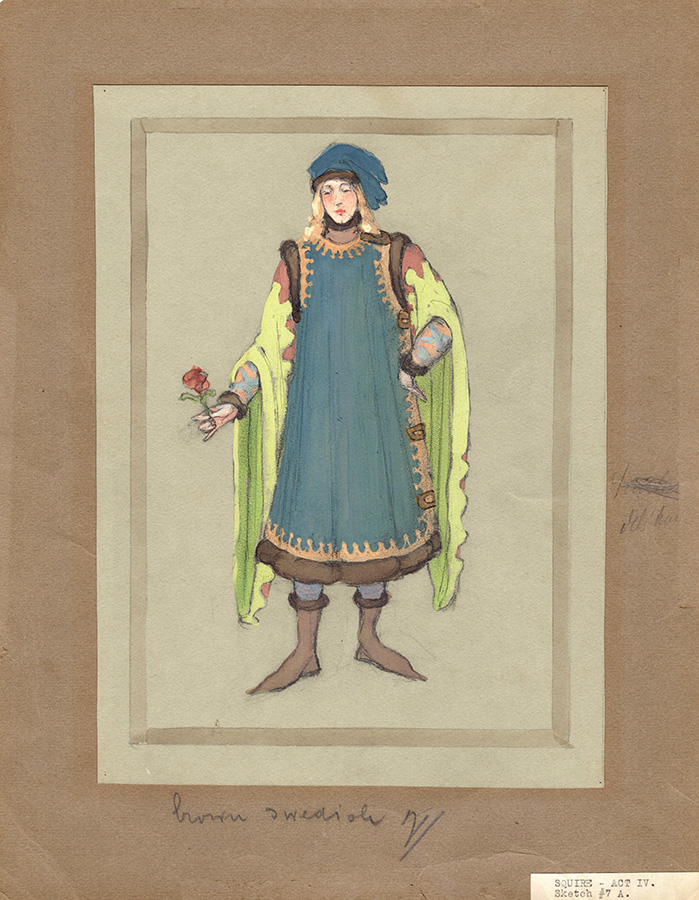
Squire

John of Gaunt
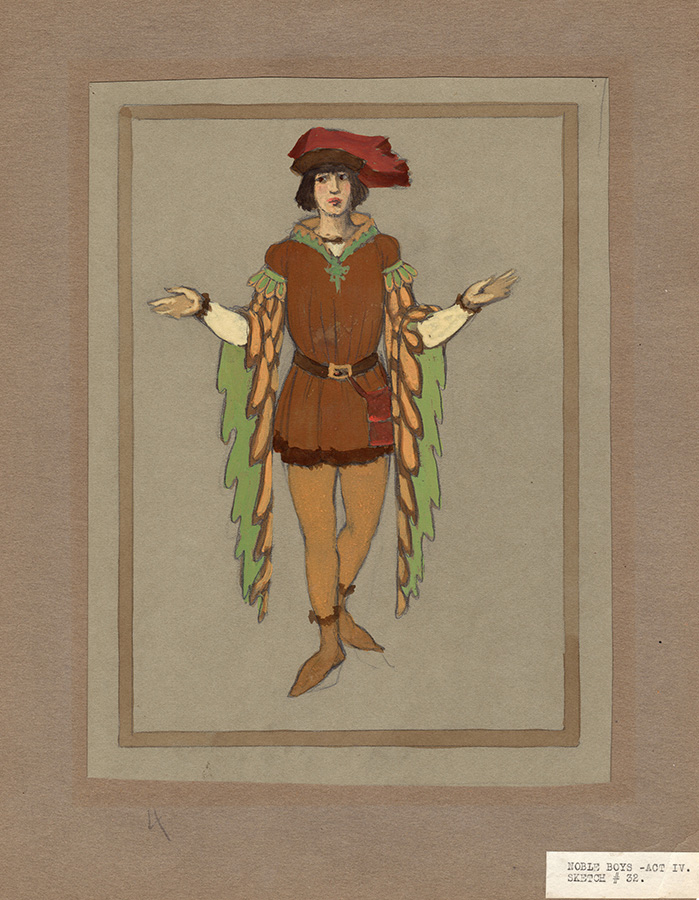
Noble Boys

Johanna
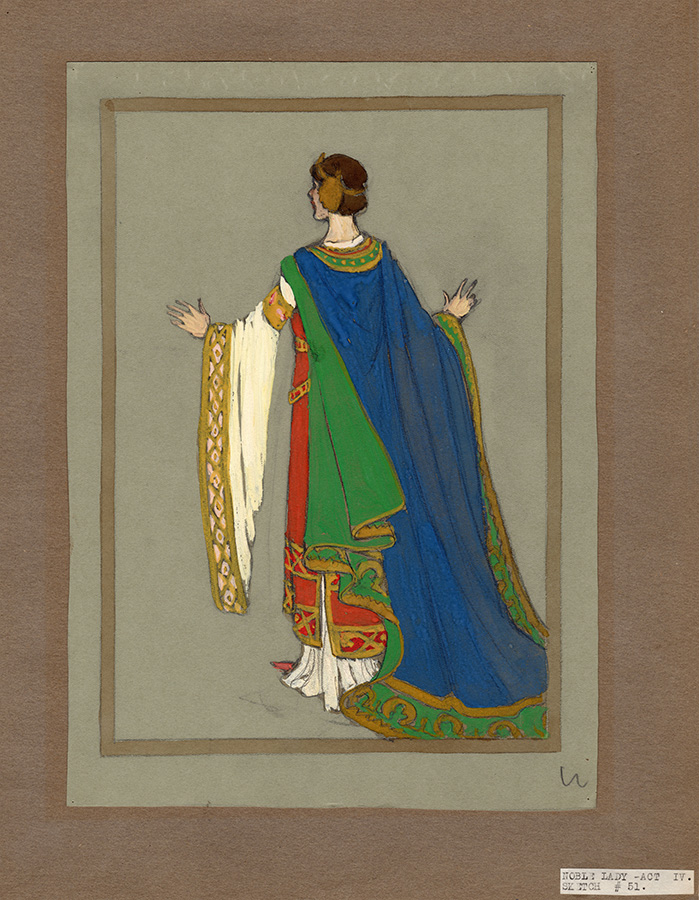
Noble Lady
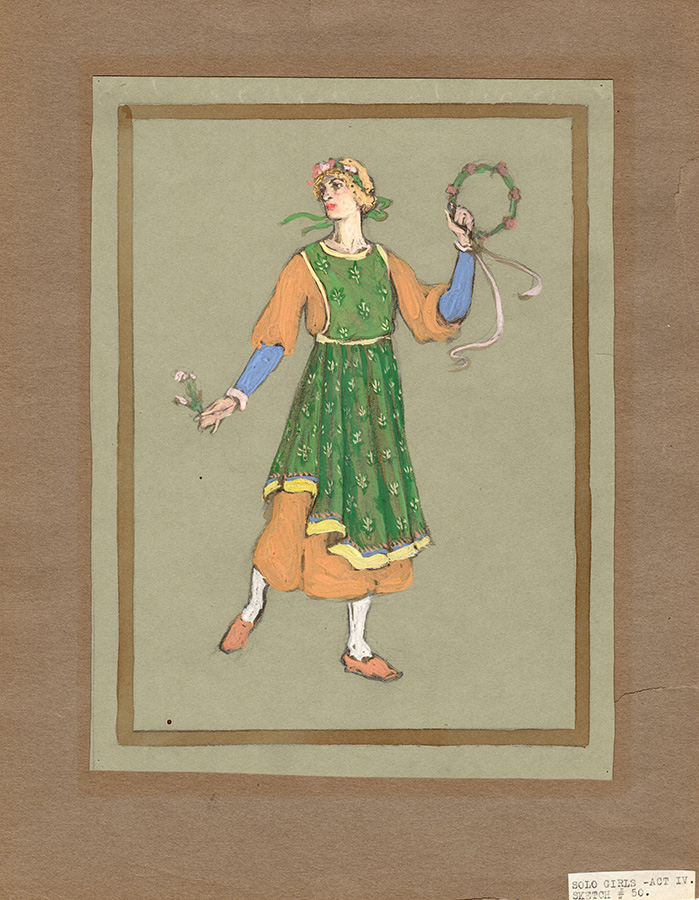
Solo Girls
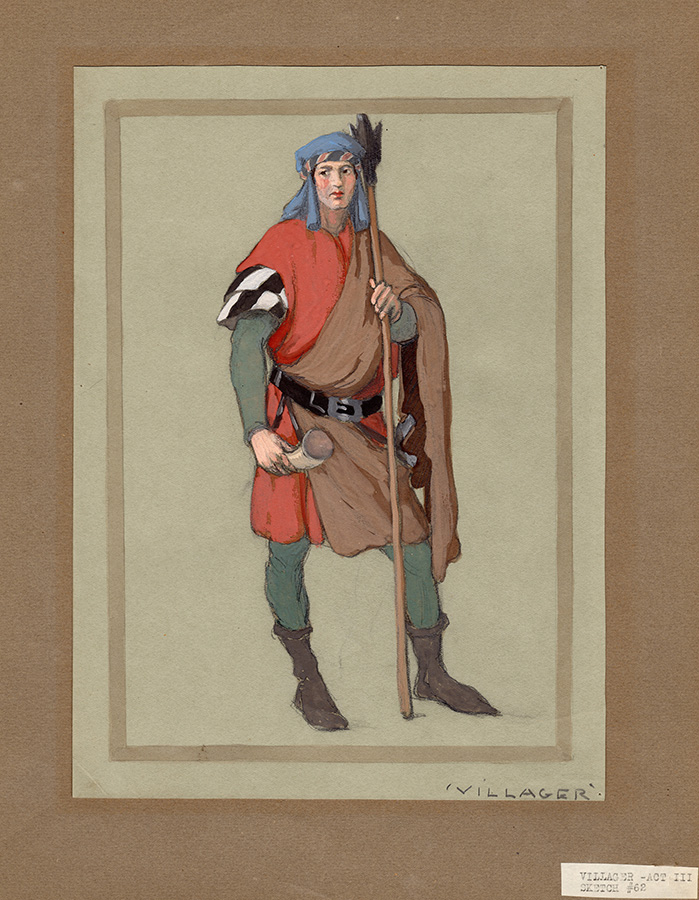
Villagers
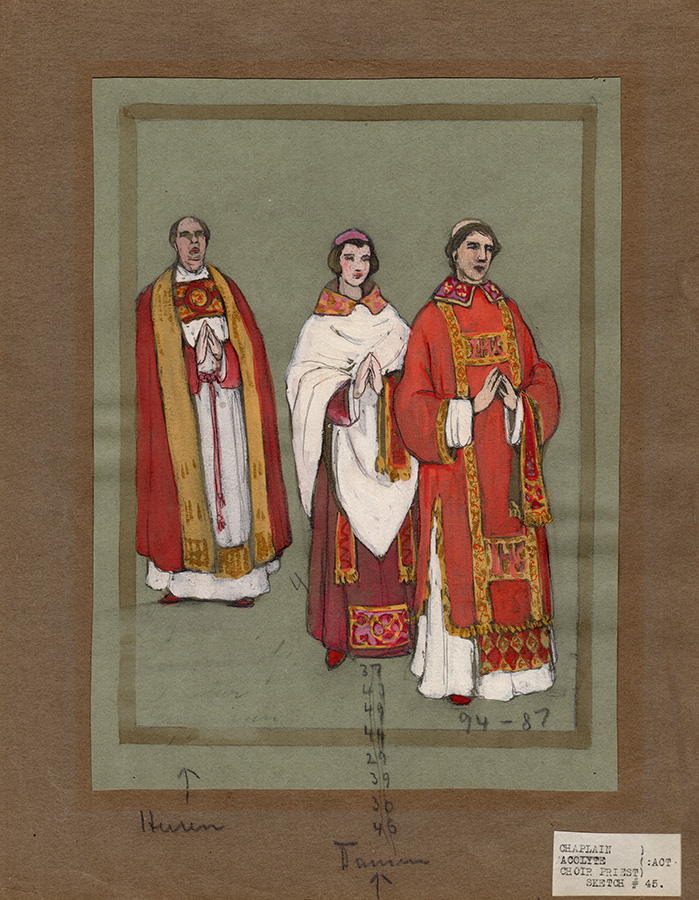
Robbed Clerics
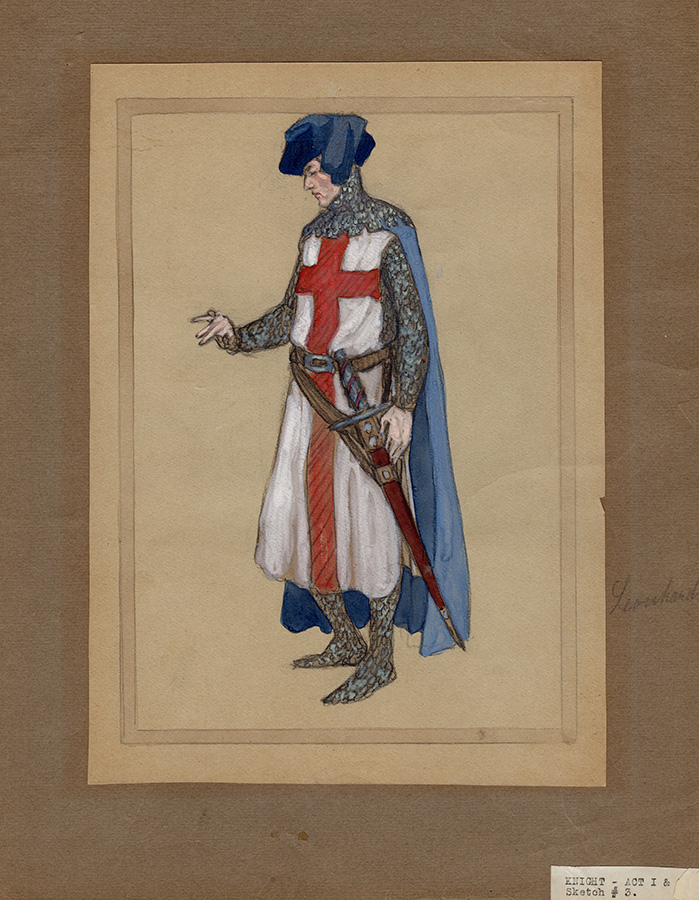
Knight
Selection of costume sketches for The Canterbury Pilgrims in gouache on paper (Metropolitan Opera Archives)
In 1913, Hildreth Meière relocated to San Francisco with her family, a move prompted by her father’s health.1 She took full advantage of the city’s cultural offerings, regularly attending the ballet and theater as she had in New York. During these performances, she would intently observe the dancers and actors and later use her mental images and thumbnail notes to develop sketches. Her subjects included the Russian ballerina Anna Pavlova and the Canadian-born actress Margaret Anglin.

Anna Pavlova performing in Les Coquetteries de Columbine at the Cort Theatre, San Francisco, CA, sketch in gouache on paper, 1915. Signed by Pavlova, (Private Collection)
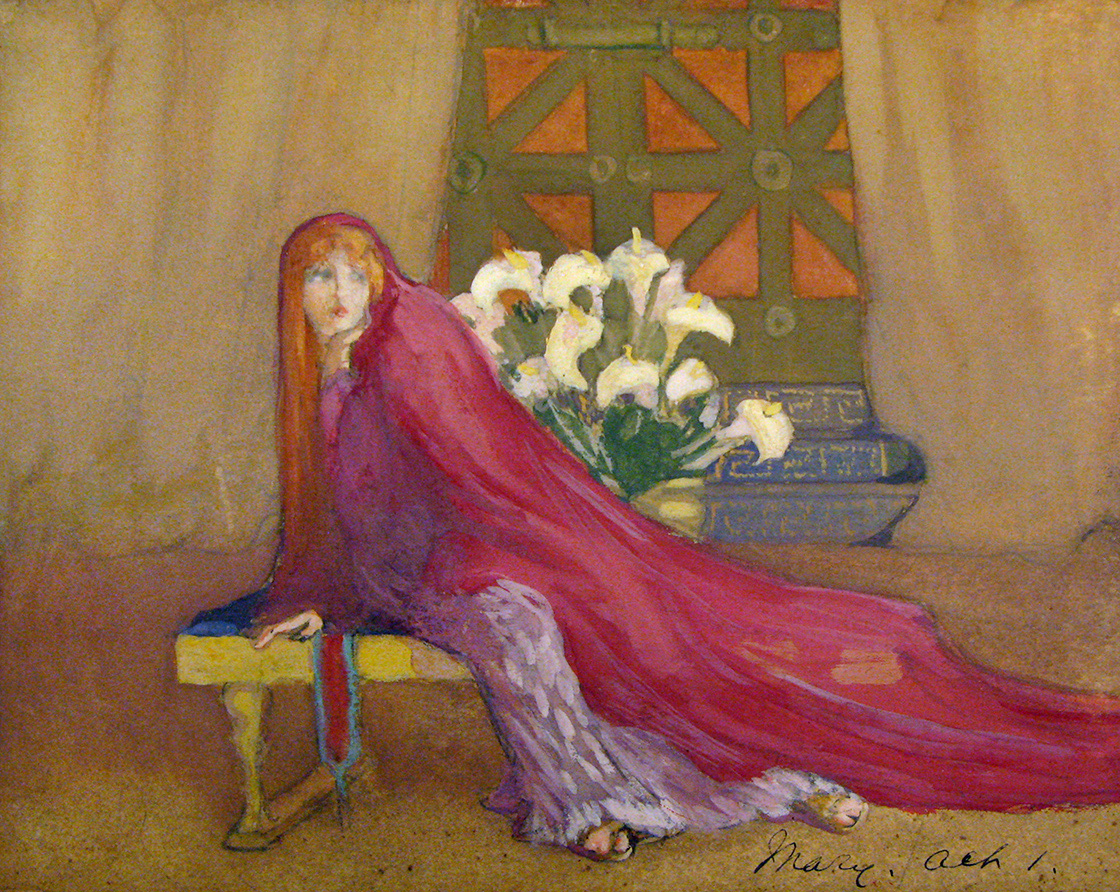
Margaret Anglin in My Divine Friend, painting in graphite, watercolor, and tempera on paper, 1916. In the collection of the Margaret Anglin papers, Billy Rose Theatre Division, The New York Public Library
In the summer of 1915, while Anglin was appearing at the Greek Theatre in Berkeley, Meière took her drawings to a San Francisco shop to be framed. A member of Anglin’s company who happened to be at the framers saw the sketches and told Anglin about them. Anglin asked to meet Meière and after seeing more of her work, invited her to attend rehearsals and produce additional sketches. At the end of the season, Anglin purchased all of the drawings, which are now in the collection of the Billy Rose Theater Division of the New York Public Library for the Performing Arts, and encouraged Meière to return to New York to design costumes and sets for a series of upcoming plays.
In January 1916, 23-year-old Hildreth Meière traveled cross country, by herself, to Manhattan. Her first commissions, a “Gothic costume” and a “scene for Antony and Cleopatra” came from Livingston Platt, Anglin’s costume and set designer. Through Platt, she also designed costumes for The Canterbury Pilgrims, a Reginald De Koven opera that debuted at the Metropolitan Opera in March 1917. Her sketches in gouache on paper are in the collection of the Metropolitan Opera Archives. Meière also assisted Platt in the design of costumes for Madame Frances Alda’s performance in Francesca da Rimini after the diva rejected those proposed by a well-known Italian designer.
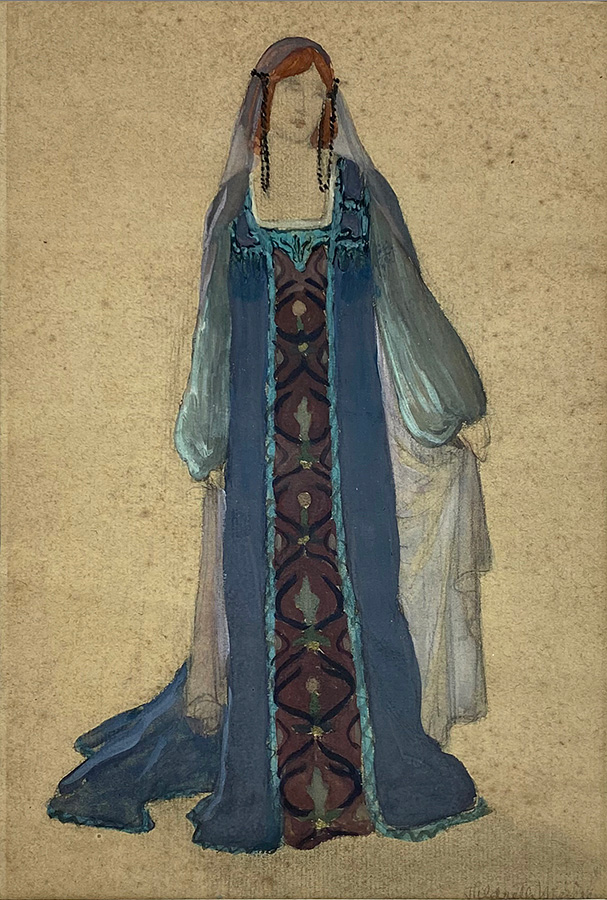
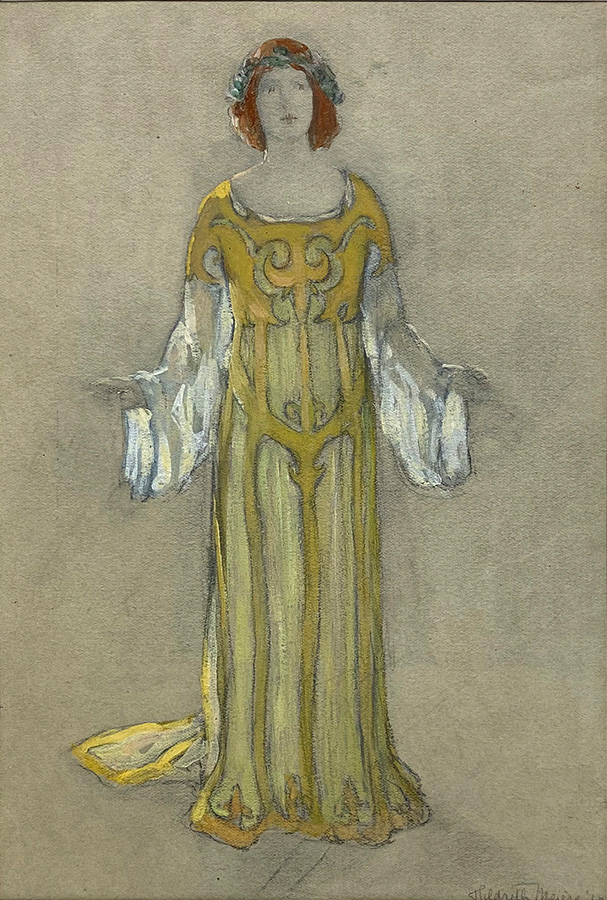
Sketches of Madame Frances Alda’s costumes for the performance in Francesca da Rimini, Metropolitan Opera, gouache on paper, 2016 (Private Collection)
When Meière left California, her mother had expressed one qualm—that her daughter’s success in the theatrical world might lead her to forsake murals. “I was successful, but to me the work was only a means to an end,” Meière later said. “My mother need not have feared, for she was writing to me, and her letters were epics of inspiration. I could never have gone off the right road with her always keeping my eyes looking straight ahead.”2
For a full discussion, see Catherine Coleman Brawer and Kathleen Murphy Skolnik, The Art Deco Murals of Hildreth Meière (New York: Andrea Monfried Editions, 2014): 32-34.
Genevieve Parkhurst, “An Artist Who Happens to Be a Woman: The Remarkable Career of Hildreth Meière,” Pictorial Review 27:12 (September 1926):106